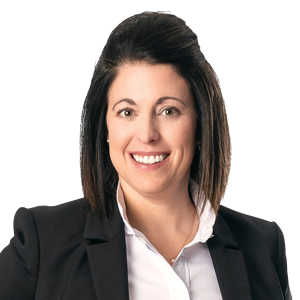Cash-flow management software helps small, medium and large businesses to survive and grow. Here is how.
SME and large corporations alike can leverage cash management software to improve their financial stability, make more informed decisions and optimize financial operations. There’s no need to think too big. Carefully selected software can be implemented quickly and affordably.
Optimize cash management
Optimized, automated management of incoming and outgoing cash flows ensures that the company always has the liquidity it needs to meet its financial obligations. It empowers management to make informed decisions about investments, loans, payments to suppliers, and much more.
Proactive management helps minimize borrowing costs and optimize investments.
- For example, by anticipating cash requirements, a company can optimize the use of its lines of credit and avoid unnecessary interest charges.
- It can also maximize returns on its short-term investments without compromising its liquidity needs.
Customers who have migrated their accounting systems to the new cloud platforms can also enjoy unexpected savings. By design, cash management software integrates easily with banks and accounting systems, considerably reducing ERP deployment costs where the system is already in place.
Improve operational efficiency
One of the most underestimated benefits of cash management software is the automation of many financial management tasks, such as payment management and bank reconciliation. The resulting time savings and reduced risk of human error are major advantages.
Counter the labour shortage
Adopting a system will enable your organization to reduce the time spent on operations. This will free up your managers to focus more on strategic functions that add value to the company. Cash management software is in fact one of the most effective solutions to today’s labour shortage.
Detect fraud
Cash management software incorporates advanced security features to detect fraudulent activity more quickly, which helps shield company funds from the risk of fraud.
Choose the right cash management software
It is in your company’s interest to invest in cash management software to improve efficiency. Treasurers and controllers are key strategic partners within your organization. With the right technological tools, they’ll have everything they need to carry out their duties with maximum benefit.
Keep in mind that the cash management software market is vast, offering many possibilities, which can make the choice difficult for an entrepreneur. It is important to choose the best solution for your needs, your objectives and the complexity of your business. You can count on a competent advisor to help you make this choice.
11 Dec 2023 | Written by :
Louis-Étienne Bérubé is a management consulting expert at Raymond Chabot Grant Thornton.
See the profileYou could also like to read
Next article
Companies that send Canadian employees to work in the U.S. can face a series of income and withholding tax obligations. What are they?
Many Québec companies do business in the U.S., sending employees to work south of the border. However, having employees work in the U.S., either to attend the occasional trade show, meet with clients or manage an office, is not as simple as it may seem. The situation should be carefully analyzed since there may be a number of tax obligations for all parties concerned.
Obligation to pay U.S. income tax
A Québec company that sends an employee to the U.S. on a temporary basis will be required to remit U.S. payroll taxes on amounts paid to the employee who is providing services on U.S. soil.
There are certain exceptions, however, such as those included in the Canada / U.S. tax treaty, when the employee is in the U.S. during one or more periods not exceeding 183 days and his salary is managed and paid in Québec. The same applies if the proportion of the person’s annual salary earned in the U.S. does not exceed US$10,000.
In order to proactively benefit from the provisions of the tax treaty, the employee will need to complete form 8233 and submit it to his employer.
It is important to note that the benefits provided by the tax treaty are not systematically recognized at the state level. In fact, each U.S. state has its own rules and some states do not recognize the provisions included in the treaty. That is why it is important to consult with a cross-border tax expert who can provide some clarity.
U.S employee benefits
Any compensation paid to employees for services rendered in the U.S. is generally subject to withholdings for U.S. employee benefits (Social Security and Medicare). However, there are exceptions here as well.
The social security agreement reached between Québec and the U.S. includes an exemption from paying U.S. employee benefits if the employee is sent for a maximum of five years. During this time, the employee will continue to contribute to the Québec pension plan. An application must be sent to the Bureau des ententes de sécurité sociale before the employee is transferred in order to benefit from this exemption.
Generally, it is very advantageous to take advantage of this agreement. It allows a seconded employee to continue to contribute to the Québec plan (Régime des rentes du Québec) rather than the American plan, which is much more costly for both the employer and the employee.
Required forms
In all cases, both the employer and the employee are required to file certain tax forms.
Employees who are moving to the U.S permanently must file the U.S. tax return (Form 1040) while those who are being sent temporarily are required to file a non-resident alien tax return (Form 1040 NR).
An employee who has a significant physical presence in the U.S. while maintaining strong residential ties with Canada can file forms 8833 and 8840 to claim Canadian residency for tax purposes.
The employer will be required to issue a W-2 tax form (equivalent to the T4 slip in Canada).
Permanent establishment in the U.S.?
These tax obligations are essentially based on the concept of permanent establishment. A Québec business will be subject to U.S. income tax if it maintains a fixed place of business in the U.S.
In such cases, it is important to know that only the revenue attributable to the permanent establishment—and not all of the company’s operations—is taxable in the U.S. In most cases, Canadian companies that avail themselves of the foreign income tax credit will not be required to pay income tax twice on this income.
Determining whether a Québec business has a permanent establishment in the U.S. is a question of fact that must be analyzed very carefully.
Sending Canadian employees to the U.S. can therefore be a very complex matter. It is important to consult with an international tax expert, who will have a solid grasp of the rules in effect in Canada as well as south of the border and who can provide valuable assistance to minimize the tax impacts .
04 Dec 2023 | Written by :
Next article
The Grant Thornton International IFRS team has published three Insights into IFRS 3.
Mergers and acquisitions (business combinations) can have a fundamental impact on the acquirer’s operations, resources and strategies. For most entities, such transactions are infrequent and each one is unique. IFRS 3 Business Combinations contains the requirements for these transactions, which are challenging in practice. The standard itself has been in place for more than 10 years now and has undergone a post-implementation review by the IASB.
The Insights into IFRS 3 series summarizes the key areas of the standard, highlighting aspects that are more difficult to interpret and revisiting the most relevant features that could impact your business.
The next three publications in the Insights into IFRS 3 series present guidance on IFRS 3’s requirements for recognizing and measuring non-controlling interests (NCI), determining and measuring the amount of consideration transferred, and determining what is part of a business combination in cases where there are other transactions and arrangements between parties:
- Insights into IFRS 3 – Recognising and measuring non-controlling interests;
- Insights into IFRS 3 – Consideration transferred;
- Insights into IFRS 3 – Determining what is part of a business combination transaction.
Next article
Starting in 2024, the AMT calculation will be significantly modified to better target high-income taxpayers.
The Alternative Minimum Tax (AMT) rate will be raised from 15% to 20.5% and the basic exemption will increase from $40,000 to approximately $173,000. In addition, the taxable income base used to calculate the AMT will be broadened. Québec will harmonize with these measures, using similar rate and exemption parameters.
These changes will impact high-income taxpayers, particularly individuals (and trusts) who realize a significant capital gain, especially one that is not eligible for the capital gains deduction (CGD).
Example: An individual who receives a salary of $150,000 and dividends of $100,000 and realizes a capital gain of $3 million on which a CGE of $971,000 is claimed in 2023 would not have to pay an AMT. That same individual would have to pay just over $100,000 in AMT under the new parameters, as of 2024.
An entrepreneur who sells his shares at the end of his career could end up paying a large AMT, with no possibility of recovering it if he has no other source of income after retirement, such as salary or RRSP withdrawals.
Since only 50% of non-refundable tax credits (including the charitable donation tax credit) will now reduce the AMT, these changes will affect taxpayers who make large donations. Individuals who receive a significant taxable benefit in connection with the exercise of stock options may also be affected, as such a benefit will now be considered 100% for AMT purposes (with no deduction).
AMT in brief
The AMT aims to ensure that all individuals (including trusts) pay their fair share of tax. It is a parallel calculation to regular tax that allows fewer deductions, exemptions and tax credits than the ordinary rules.
When filing their tax return, individuals must pay either the AMT or regular tax, whichever is higher. The additional tax thus payable in one year can be recovered over the following seven years, to the extent that the regular tax exceeds the AMT in those years.
Estimate the impact and plan ahead!
Some transactions scheduled for early 2024 may have to be brought forward or spread over 2023 and 2024 to limit the impact of these changes.
Consult your tax advisor to discuss these measures and assess their impact.







